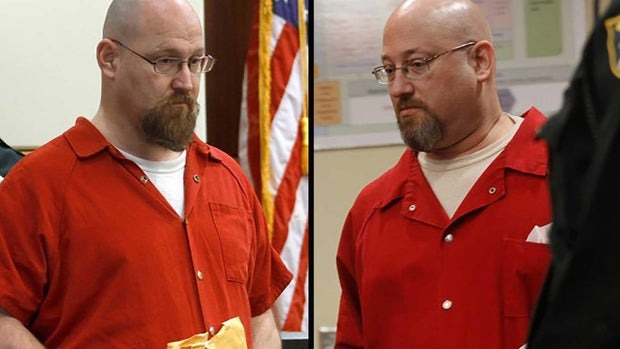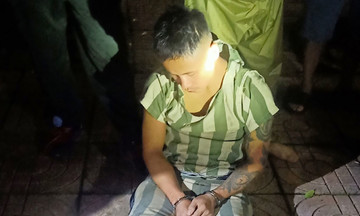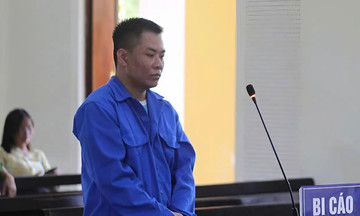Dr. Teresa Sievers lived a seemingly perfect life with her husband, nurse Mark Sievers, and their two daughters in Bonita Springs, Florida. The couple ran a successful medical practice, with Teresa handling patient care and Mark managing the business and caring for their children.
On 28/6/2015, Teresa cut short a family vacation in New York to return home alone for patient appointments the next day. Mark and the children remained in New York.
The following morning, when Teresa failed to arrive at work, concerned colleagues contacted her husband. Mark asked a neighbor, Dr. Mark Petrites, to check on her.
"I'm at a friend's house. He's out of town and I came over to see if his wife was okay. She's dead on the floor. There's a hammer next to her, and she's been hit in the back of the head," Petrites reported to 911.
At the scene, police found the garage door open, a ransacked suitcase inside, and signs of forced entry through a side door. Just inside the side door, a dog's food bowl had been knocked over. Teresa's body lay face down in the kitchen. Her purse, also ransacked, was found on a nearby stool.
 |
The kitchen where Teresa Sievers was murdered. Photo: WINK |
The kitchen where Teresa Sievers was murdered. Photo: WINK
Police determined that she had been attacked immediately upon entering. The medical examiner later confirmed that she had been struck with a hammer 17 times.
Initially, investigators suspected a botched burglary, but nothing of value was missing, including $40,000 in cash and a gun collection stored in a safe. No fingerprints or DNA belonging to the perpetrator were found.
However, the home's alarm system appeared to have malfunctioned. Mark's mother, Bonnie Sievers, had been caring for the family pets and had been in and out of the house over the weekend. She stated she had been there on Saturday evening and had set the alarm, but when she returned Sunday morning, it was off. Bonnie told police that when she mentioned this to Mark, he dismissed it as a system error. However, police determined the alarm had been deactivated at 6:09 a.m. on 28/6, the day Teresa was killed.
While husbands are often the prime suspects in such cases, Mark was hundreds of miles away at the time of the murder. Teresa's family insisted Mark was a devoted husband.
Police explored the possibility that Teresa had been targeted by a disgruntled employee or someone she had helped through her charity work, but these leads went nowhere. When questioned, Mark claimed, "I can't think of anybody who would want to hurt Teresa, want to take her life – that's ridiculous."
While initially denying any infidelity, Mark later admitted to occasional "swinging" and an "open marriage." Investigators found photos and videos on his phone of other women.
Mark appeared emotional during questioning, sometimes sobbing uncontrollably, even punching himself in the face. Left alone in the interrogation room, he began talking to his deceased wife. "Oh, Teresa, what am I going to do? If I was with you, this wouldn't have happened. If I'd come back, this wouldn't have happened," he muttered. Investigators found his behavior overly dramatic and suspicious.
Despite Mark's claims of a harmonious relationship, neighbors reported frequent arguments. Still, police lacked concrete evidence linking him to the crime.
The breakthrough came when an Illinois police officer reported a woman named Rose with information about the case. Rose had overheard a conversation about her friend's new son-in-law, Curtis Wayne Wright, being in Florida to handle an IT emergency for a friend that weekend. Curtis, who lived in Missouri, was the subject of family complaints for leaving his cell phone behind and being unreachable.
Rose hadn't thought much of the conversation until she learned Curtis was Mark's childhood friend and that Teresa had been murdered that same weekend.
Curtis initially claimed he was in Missouri, but this was refuted by friends and his wife. Investigators were struck by the uncanny resemblance between Curtis, who had a drug-related criminal record, and Mark. Both sported similar beards, shaved heads, glasses, and often dressed alike.
 |
Curtis Wayne Wright (left) and Mark Sievers in court. Photo: The News-Press |
Curtis Wayne Wright (left) and Mark Sievers in court. Photo: The News-Press
A search of Curtis's rental car revealed a GPS device. Though the memory had been wiped, technicians recovered data showing a clear route from Missouri to Bonita Springs. Curtis had even posted a restaurant review along the way.
The GPS was linked to an email address belonging to Jimmy Ray Rodgers, Curtis's friend with a criminal record.
On the morning of 27/6/2015, Curtis picked up Jimmy in a rental car in Missouri. An address was entered into the GPS, and they drove over 1,700 km to Bonita Springs, a journey of over 17 hours. Investigators estimated the two arrived at the Sievers' home around 6 a.m. on 28/6. They believed the men entered the house, disabled the alarm, and then left. The next address entered into the GPS was a local Walmart. Surveillance video showed Jimmy and Curtis shopping, seemingly unconcerned about being identified. They purchased garbage bags, wet wipes, black towels, black shoes, and a lock-picking set.
After their shopping trip, the GPS logged a drive to a local beach. Then, they returned to the Sievers' home and waited for Teresa.
 |
Blue jumpsuit discarded along a Missouri highway. Photo: WINK |
Blue jumpsuit discarded along a Missouri highway. Photo: WINK
Jimmy's girlfriend, Taylor Shomaker, told police that Jimmy had driven her along Route 47 in rural Missouri, asking her to discard parts of a broken cell phone, gloves, and a blue jumpsuit. Taylor said Jimmy confessed to killing Teresa with a hammer for a promised $10,000. She led police to the discarded jumpsuit, and fibers from it matched those found on Teresa's dress.
Jimmy and Curtis were arrested. Months later, the full plot was revealed. Curtis agreed to testify against Mark in exchange for a reduced sentence. He told police that Mark had offered him $100,000 to kill his wife.
According to Curtis, Mark claimed Teresa was planning to divorce him and didn't want custody of their children. He was motivated by a $5.8 million life insurance policy.
Curtis and Jimmy went to the Sievers' home early on 28/6, disabled the alarm using a code provided by Mark, and left. They returned that night to ambush Teresa.
"She put her hands up and tried to defend herself. She was very surprised; I really think she thought I was Mark. She asked, 'Why?'" Curtis recounted.
Mark was arrested in 2/2016 and charged with first-degree murder. Police reported he smirked as he was handcuffed.
Jimmy was the first to stand trial, in 10/2019. He was convicted of second-degree murder and sentenced to life without parole. Curtis pleaded guilty to second-degree murder and received a 25-year sentence for his testimony.
Prosecutors argued that Jimmy and Curtis believed they could get away with murder, showing little concern for the digital trail they left. Digital evidence from the car's GPS, cell phone towers, and surveillance video allowed investigators to trace the killers' steps, piecing together the timeline of the plot.
"This is a case where 21st-century technology became extremely important," the prosecutor stated.
In 12/2019, Mark was convicted of first-degree murder and conspiracy to commit murder. He wept as he was sentenced to death in 2020. He is currently appealing the verdict.
Tue Anh (according to Oxygen, CBS)












